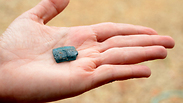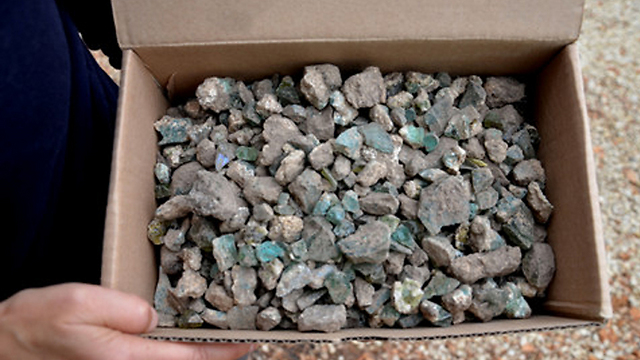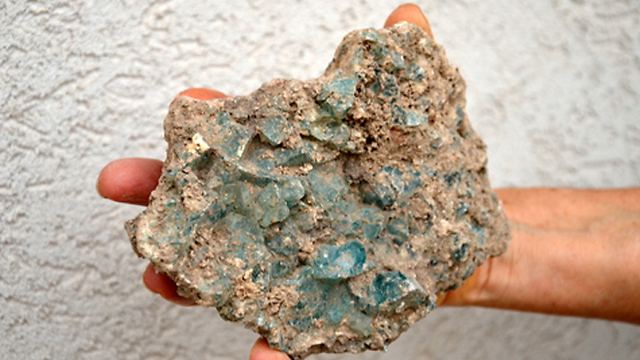
Ancient bracelet fragment featuring menorah uncovered
Archaeologists discover glass turquoise artifact in Roman-era refuse pit at Mt. Carmel, hope to find clues regarding inhabitants.
A 1,600-year-old bracelet fragment engraved with the seven-lamp menorah from the Temple in Jerusalem was discovered Thursday during excavations by the Israel Antiquities Authority in Mount Carmel National Park.
In recent weeks infrastructure work to build a water reservoir for the city of Yoqneam was conducted at the dig site. Diggers at the site uncovered an industrial area and refuse pits of a large settlement from the Roman era and the early Byzantine period, at the end of the fourth century CE.

"After sorting through crates containing hundreds of glass fragments thrown into the refuse pit, we found a small piece of a bracelet," said Limor Talmi and Dan Kirzner, who managed the dig. "It was very dirty, but you could still see it was decorated. After cleaning, we saw a bracelet made of turquoise glass and decorated with symbols depicting the seven-lamp menorah."

Yael Gorin-Rosen, manager of the glass department at the Authority, said "glass bracelets and amulets decorated with a menorah or lion, or symbols of gods and animals, and originating from this era, have been found in Israel, Lebanon, and Syria.
"Until now, three bracelet fragments with menorah symbols have been found in Israel. Such artifacts were mostly found near burial sites. It's rarer to find them in a settlement site, and especially in an ancient refuse pit."
Archeologists have been trying to discover whether the bracelet could be considered proof of inhabitants being Jews, Samarians, pagans, or Christians. Experts also raised the possibility that there was a workshop at the site and that the bracelet was meant to be sold.
"It's possible that the large industrial site supported the population of the adjoining settlement," sources in the Authority said.











